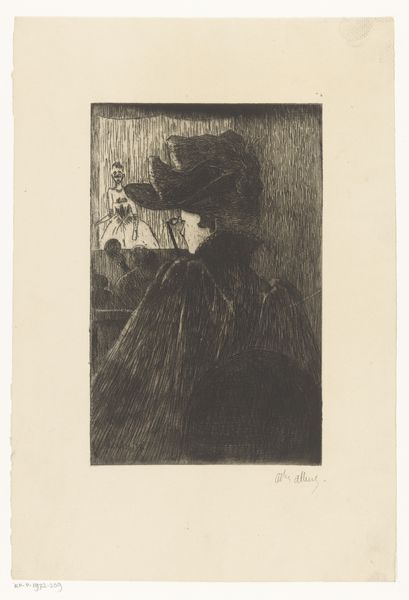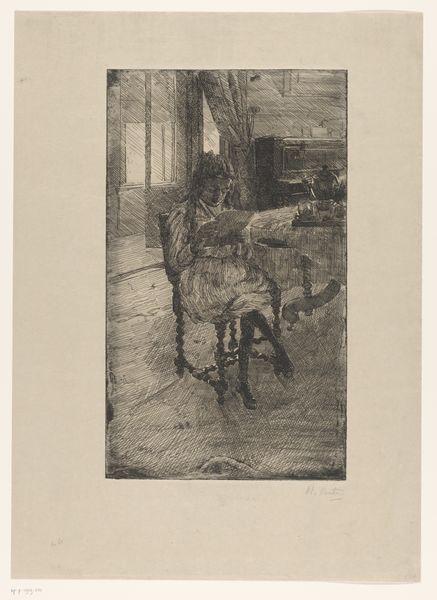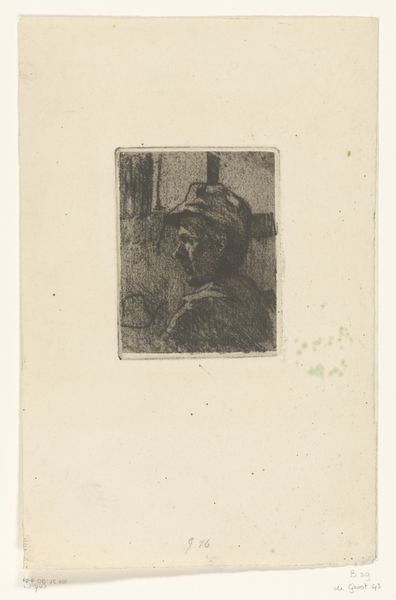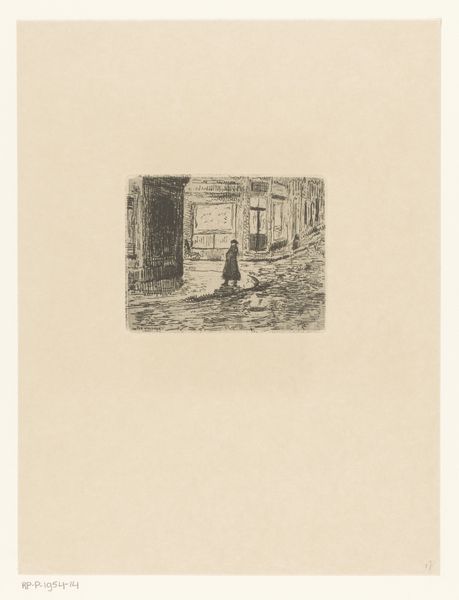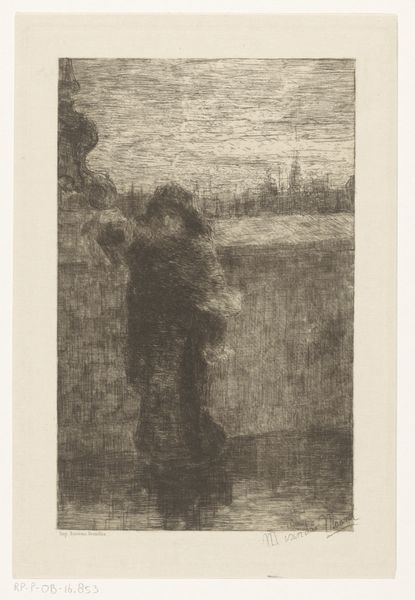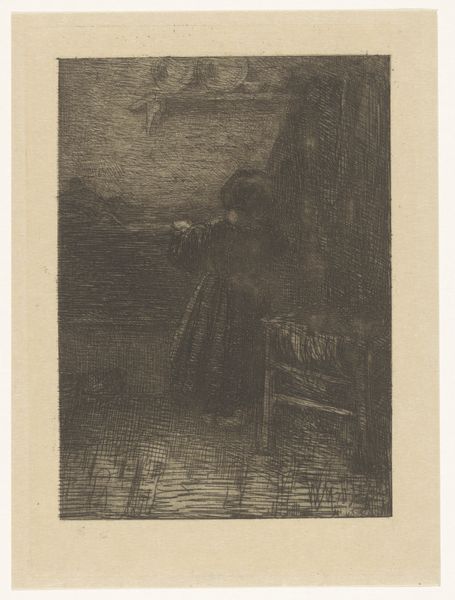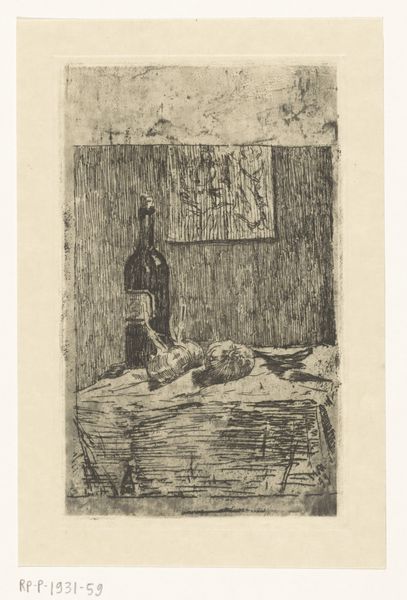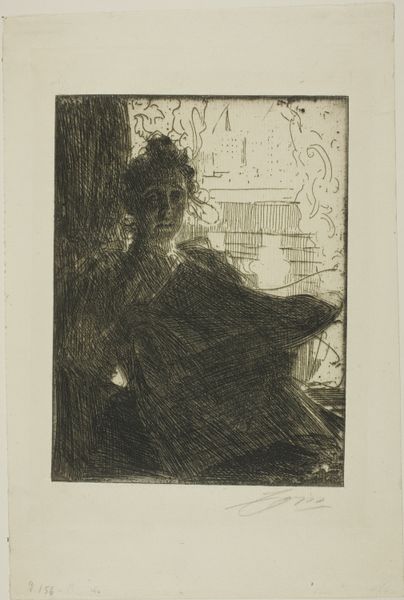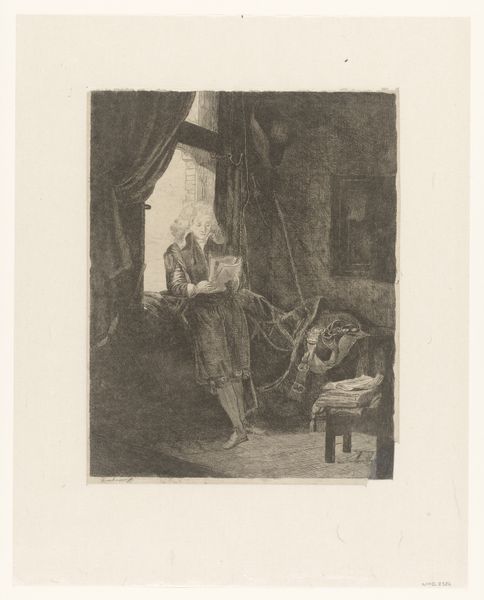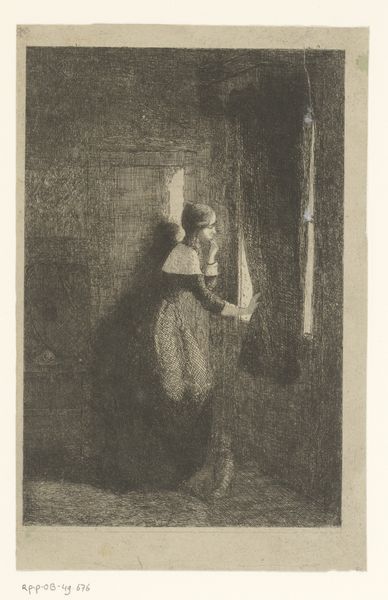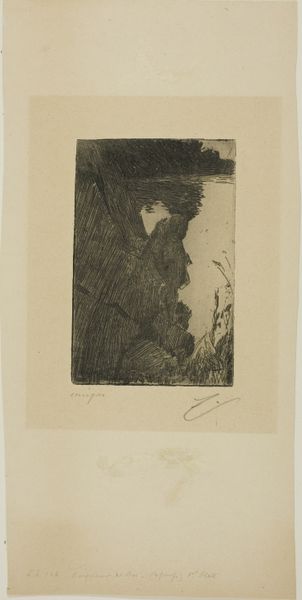
print, etching
#
portrait
# print
#
etching
#
figuration
#
genre-painting
Dimensions: height 240 mm, width 160 mm
Copyright: Rijks Museum: Open Domain
Curator: Looking at Marinus van der Maarel’s etching, titled "Veiled Woman in a Train Compartment", likely created between 1867 and 1921, one immediately senses a quiet, almost melancholic mood. What strikes you first? Editor: The textural contrast is what I find most engaging: the soft, smudgy quality of the woman's figure against the harsh, vertical lines depicting the window. This tension seems quite intentional. Curator: I agree, and let’s consider the means of its creation. As a print, likely produced in multiples, this image makes visible a fleeting moment in the increasingly accessible and public world of train travel during the period. It invites questions about labor, craft, and production of art. Editor: Absolutely. Furthermore, the restriction of color enhances the sense of introspection. Her form is clearly defined, yet obscured – veiled, as the title suggests – prompting consideration of presence versus absence, revealing versus concealing. Curator: Right. And who was the intended audience for a genre scene like this, replicated in multiples? Was it meant to provide insight into the lives of travelers, especially women, using public transport, and potentially even influencing consumerism? Editor: It seems likely. The repetitive mark-making inherently flattens the image while the meticulous rendering grants her an almost sculptural solidity. It's a constant negotiation between planes. We are aware this artwork wants us to look. Curator: We mustn't disregard the historical setting and the production and accessibility afforded by printmaking, of course. However, in thinking about the artwork through this visual framework, her veiled existence in public speaks quietly and profoundly. Editor: Exactly, seeing van der Maarel through these lenses highlights an ongoing inquiry into human form and perception through artistic construction. It’s a testament to its sustained influence, as each reading builds toward comprehensive art-historical discourse.
Comments
No comments
Be the first to comment and join the conversation on the ultimate creative platform.
